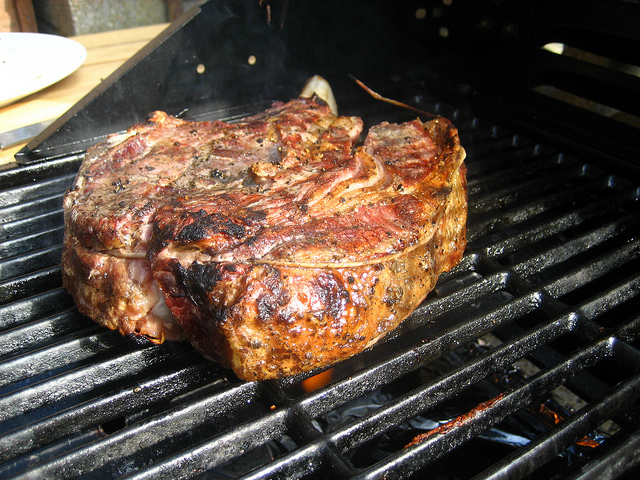Food Safety, Part I: Best Practices for Safe Grilling

Summer is a great time of year for barbecues, vacations, and camping and boating excursions. And, for many of us, it’s a chance to indulge in some special foods that we reserve specifically for these activities. However, just because it’s summer and you’re on vacation, it doesn’t mean you should be less careful about how you handle your food – after all, the last thing you need is a nasty bout of food poisoning!
Safe Meat and Poultry Preparation
Harmful bacteria can multiply quickly and cause foodborne illness. The first step for preparing a great meal, of course, is purchasing your food and bringing it home. When you shop, select your meat or poultry last before you check out so that they remain unrefrigerated for the shortest amount of time. Put any packages of raw meat or poultry in their own plastic bags so that they don’t drip on any other food and cause cross-contamination. You must refrigerate your meat or poultry within one hour, especially if the temperature is above 90 degrees. If you’re not heading straight home, consider bringing a cooler with ice to keep your meat cool. When you arrive home, place your meat or poultry in the refrigerator immediately. If you have poultry or ground meat that you don’t plan to use within the next day or two, freeze it. Other meats should be used within four to five days unless you plan to freeze them.
When cooking frozen meat, it helps to thaw it completely before you grill so that it will cook evenly. You can do a slow, safe thaw by putting meat in the refrigerator, or you can thaw sealed packages by placing them in cold water. If you need to thaw your meat or poultry more quickly, you can microwave it as long as you plan to grill it immediately after.
Marinade can give your meat or poultry that savory goodness that tastes like summer, but be careful about cross-contamination. If you reuse any marinade that has been in contact with raw meat or poultry, bring it to a boil to burn off any harmful bacteria. Marinate your meat or poultry in the refrigerator rather than at room temperature, and keep everything cold until it’s ready to grill.
Good Grilling Practices
Keep it clean! Don’t use the same platters and utensils for raw meat as you do for cooked meat, as the bacteria from raw meat can contaminate your safely cooked food. If you’re camping, be sure that your water source is clean. To be safe, bring your own water for meat preparation and cleaning. You can use clean cloths or antibacterial towelettes to sanitize surfaces and hands.
If you want to cut down on the amount of time spent at the grill, precook your food in the microwave, oven, or stove and then place it on the preheated grill immediately after.
Food must reach a minimum internal temperature to be safe. The best way to ensure that it’s at the correct temperature is to use a food thermometer. Here’s a quick guide for safe minimum internal temperatures for various types of food:
| Whole poultry | 165 F |
| Poultry breasts | 165 F |
| Ground poultry | 165 F |
| Ground meat | 160 F |
| Steaks, roasts, and chops | 145 F (let rest for 3 minutes or more after cooking) |
Always completely cook your meat or poultry. If you’re reheating pre-cooked meat like hot dogs, grill to 165 F or until steaming. Once cooked, the meat should stay hot (140 F or higher) until served. Use a chafing dish or slow cooker, or place the meat next to the grill rack to keep it hot. If it’s a hot day (90 degrees or above), the food should never sit out for more than an hour. Even on cooler days, food should never be left out for more than two hours, and always refrigerate leftovers promptly.
Meat and poultry are a great source of protein and can be a significant part of a healthy diet. Just be sure they’re properly prepared.
References: USDA, Centers for Disease Control and Prevention, Foodsafety.gov
 The Daily Dose
The Daily Dose
 Therese Gadomski
Therese Gadomski
Comments are closed.